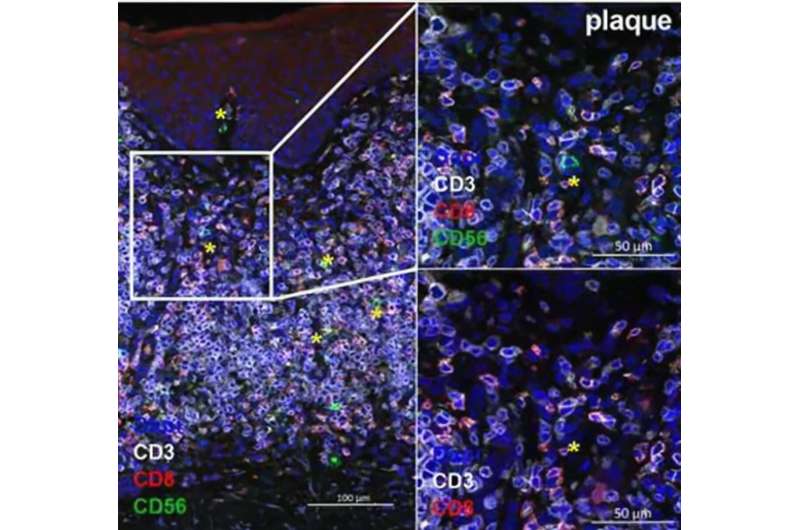Impaired natural killer cells in cutaneous lymphoma: Possible new targets for future therapies

Researchers from Karolinska Institutet found a high number of the so-called natural killer cells, an important anti-lymphoma cell, in samples from patients with cutaneous lymphoma. However, the cells were immature and less active. A future therapy could be to restore their function locally. The study was published in Frontiers in Immunology.
Cutaneous lymphoma is a serious, but less well studied type of skin cancer. Early stages of the disease have good prognosis, but in advanced stages the prognosis is poor. The treatment is seldom curative, and there is an urgent need for new treatment options.
Natural killer (NK) cells are important anti-lymphoma cells. In the study the researchers found high numbers of NK cells in skin samples from cutaneous lymphoma patients. However, these cells were immature and activity-impaired. Furthermore, the researchers found that close cellular interactions with lymphoma cells induced the impaired NK cell functional phenotype.
“These results are interesting, and suggest that enhancing the activity of skin NK cells in cutaneous lymphoma could be a potential immunotherapeutic approach,” says principal investigator Hanna Brauner, associate professor at the department of Medicine, Solna.
In a next step the authors aim to delineate factors needed for a successful rejection of lymphoma or local cure. Therefore, a detailed investigation of skin from cutaneous lymphoma patients will be performed before and during treatment, including lymphoma cells, anti-lymphoma immune cells and other cells in the tissue microenvironment.
The new knowledge gained can hopefully also be applied to increase the understanding of the pathophysiological mechanisms of other less accessible lymphoma subtypes.
More information:
Andrea Scheffschick et al, Skin infiltrating NK cells in cutaneous T-cell lymphoma are increased in number and display phenotypic alterations partially driven by the tumor, Frontiers in Immunology (2023). DOI: 10.3389/fimmu.2023.1168684
Journal information:
Frontiers in Immunology
Source: Read Full Article


